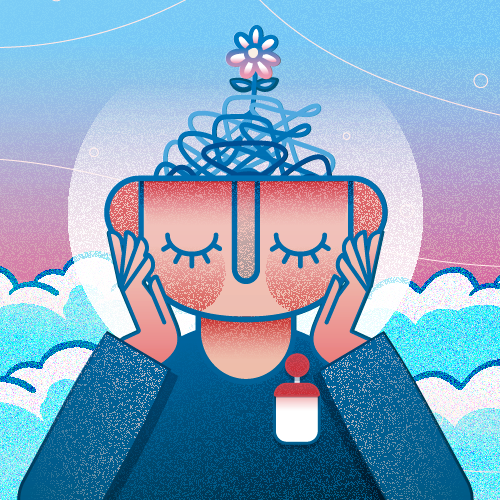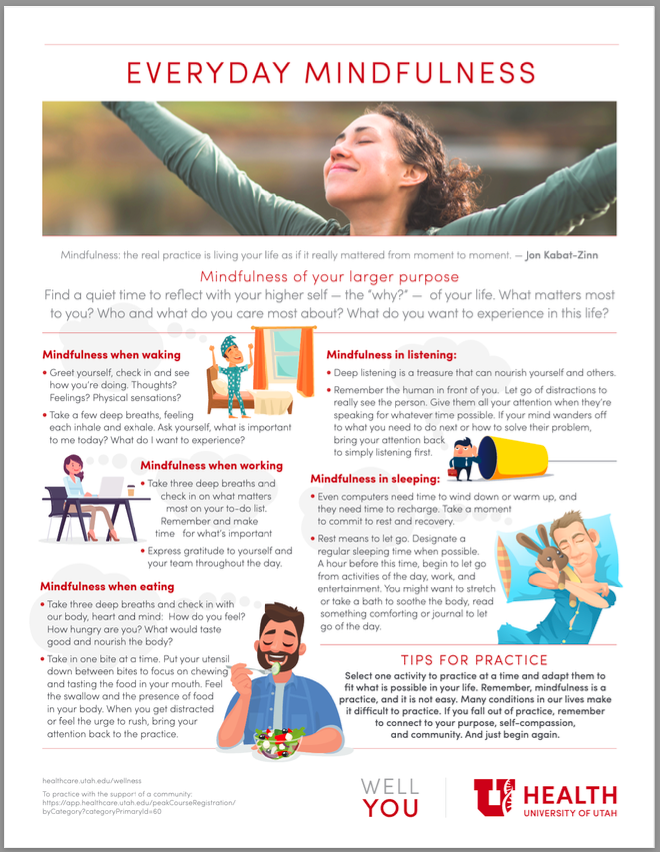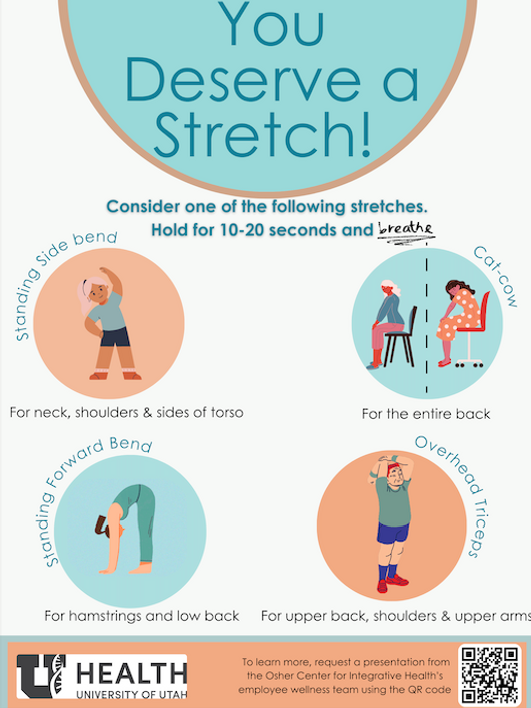hen the Osher Center of Integrative Health talks about personal well-being, we are talking about the Foundations of Health: how we eat, sleep, move and connect with ourselves, others, and the world around us.
We experience the world, in large part, by moving through it. Mindful movement is an embodied presence, anchoring our awareness to the senses of our bodies as we move through space and time.
The basics – taking movement breaks
Creating opportunities throughout the day to move brings many benefits: generating feelings of wellbeing, a boost in productivity, and increased job satisfaction. Movement breaks can be as simple as standing up from the desk to stretch, taking the stairs to another floor to use the restroom, taking a moment for a snack or to share a meal, enjoying a view from a favorite window, or going outside and walking! Check out this video to get started and be sure to share it with your team.
Mindfulness in Medicine Toolkit

Click here for a list of resources you and your team can use to practice mindfulness and increase your well-being.
Action Item
Share the movement break video with your colleagues and try to think of opportunities to move that make sense for YOU! Then, make it happen.
Mental recovery – inviting in nature
Whether you are an outdoor enthusiast or someone who accesses the outdoors only occasionally, instinct likely informs you of the immense mental, social, and physical health benefits derived from being in nature.
There is mounting scientific evidence tying experiences in nature to improved physical and mental well-being, including better mood, reduced stress, and enhanced immune response. Experiences in nature have been shown to protect against depression, anxiety, diabetes, cardiovascular disease, asthma, and obesity. One explanation for these benefits is known as attention restoration. Daily, drawn-out desk-bound tasks such as sitting through hours of Zoom meetings or prolonged periods watching TV or swiping through social media feeds, capture our direct attention and cause fatigue, which can lead to poor health outcomes. Nature invites us to disconnect from these activities and embrace a transcendent, embodied sense of fascination, mystery, and awe, which lead to attention recovery and revitalization.
Freeing ourselves - moving out of the mind and into the body
Mindfulness is an awareness of our present, moment-to-moment experience. According to the great teacher and practitioner, Joseph Goldstein, mindfulness establishes the capacity in the mind to “see the truth of how things are, the truth of nature.” And this truth can be most easily accessed through an awareness of the body. As paradoxical as it may seem, mindfulness of our true nature–lungs expanding, muscles contracting, skin sweating, heart pounding–trains us to get beyond the thinking mind, and out of our own way. Bringing a focused attention to physical activity–stretching, jumping, reaching, running–invites an openness, flexibility, curiosity, and kindness.
Action Item
Take a moment to find a gap in your schedule and plan your next mindful movement opportunity. If there is a reoccurring schedule gap (remember that even 5 minutes counts!), gift yourself a reoccurring mindful movement appointment. Way to go!
Start by turning off watches and phones, as these devices can disrupt our focus on the here-and-now, pulling us away from physical sensations and self-reflection, which both provide important data on how we are doing, what we are feeling, and what is most needed.
Mindful movement tips and instructions – how to’s for mindful movement
There are numerous strategies to help facilitate mindful movement, which can be done as a grounding exercise either prior to beginning or during the movement exercise:
Walking meditation

Click here for a guide to "walking meditation”—a focused awareness on the physical experience of walking.
Building in a daily mindful movement practice will give our cogitating, analytical, problem-solving brain time to rest, decompress and rebalance, thus creating space to reengage and be productive.
This program is supported by the Health Resources and Services Administration (HRSA) of the U.S. Department of Health and Human Services (HHS). The contents are those of the author(s) and do not necessarily represent the official views of, nor an endorsement, by HRSA, HHS, or the U.S. Government. For more information, please visit HRSA.gov.
Britta Trepp
David Sandweiss
With the change of the season upon us, now is a great time to focus on self-care. Well-being specialist Jamuna Jones shares her top 10 tried-and-true tips aimed at optimizing your health and nurturing your mind, body, and soul during this seasonal shift.
The U of U Health Resiliency Center shares a growing list of resources you and your team can use to continue building resilience together.
We have personal protective equipment (PPE) for our body–but what about our mind? Huntsman Cancer Institute nurse manager Cassidy Kotobalavu has lead training on the concept of emotional contagion–how good (and bad) emotions spread. Here are Cassidy’s expert tips (with slides) on managing emotional contagion in health care.


